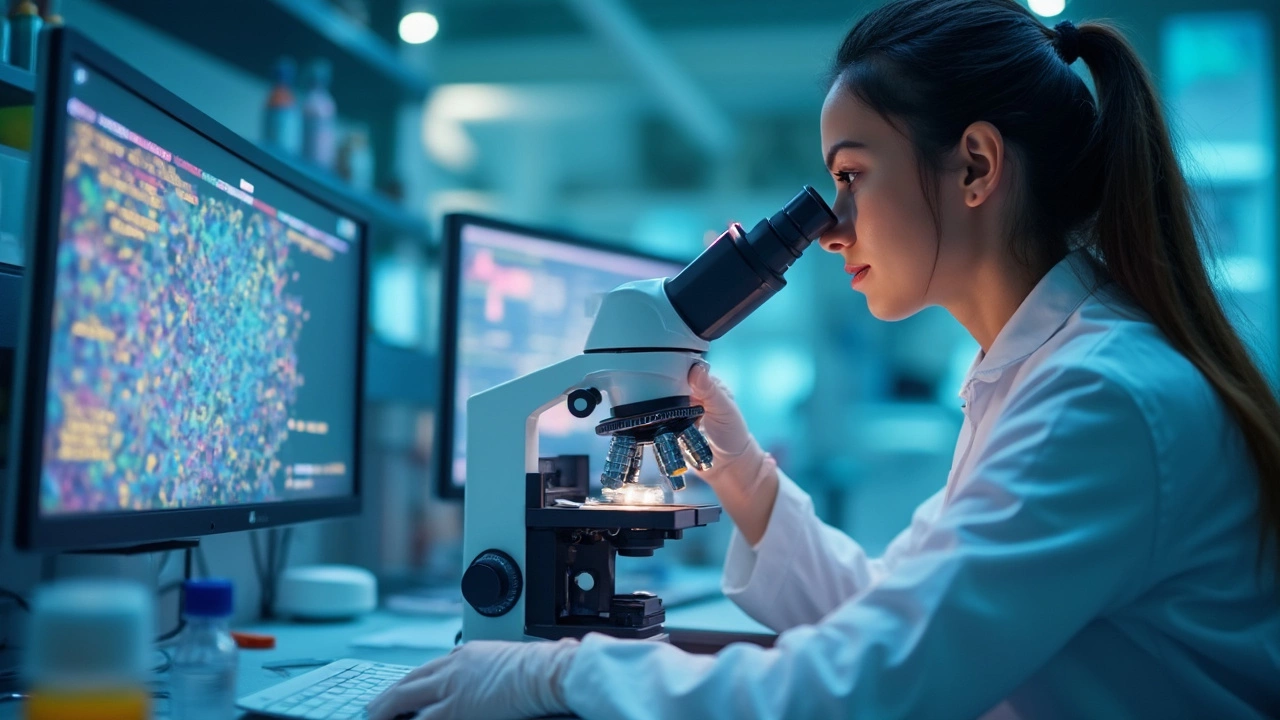Metagenomics: A Simple Guide to DNA From All Creatures
Ever wonder how researchers can tell what's living in a cup of soil or a drop of ocean water without seeing anything? That’s metagenomics in action – the science of pulling DNA straight from the environment and sorting it out like a giant puzzle. Instead of isolating one bacterium at a time, you get the whole community’s genetic code at once. It sounds high‑tech, but the basic idea is pretty straight‑forward: collect a sample, extract all the DNA, read the sequences, then match them to known organisms.
Why Metagenomics Matters
First off, it lets us peek into places we can’t grow in a lab. Soil, gut microbiomes, sewage, even the air around a city – they all host thousands of microbes that affect our health, agriculture, and climate. By cataloguing these microbes, scientists discover new antibiotics, track disease outbreaks, and understand how ecosystems respond to pollution. Think of it as a health check‑up for the planet. It also helps farmers boost crop yields by spotting beneficial microbes in the soil and cutting down on harmful ones.
On the medical side, metagenomics is changing how we diagnose infections. Traditional tests might miss a rare pathogen, but a single DNA read can reveal viruses, bacteria, or fungi hiding in a patient’s sample. This rapid, unbiased approach is already saving lives in intensive care units and guiding personalized treatments.
How Metagenomics Works
The workflow breaks down into three easy steps. First, you collect the sample – a scoop of mud, a swab from your skin, or water from a river. Next, you extract all the genetic material. This step uses chemicals that break open cells and pull out the DNA, regardless of the organism it came from. Finally, you feed the DNA into a sequencer. Modern sequencers read millions of short DNA snippets in a few hours. Those snippets are then assembled by computer algorithms that compare them to massive reference databases.
Don’t worry if the tech feels intimidating. Companies now offer plug‑and‑play kits that handle extraction and sequencing for a few hundred dollars. The heavy lifting is done by bioinformatics software that turns raw reads into a list of species, their relative abundances, and even their functional genes. This data can be visualised as charts, heat maps, or interactive dashboards, making it easier for non‑experts to draw conclusions.
One common pitfall is contamination – a stray skin cell or a dust particle can skew results. Good lab practices, like using clean gloves and processing blanks, keep the data reliable. Another challenge is the “unknown” DNA that doesn’t match any entry in the database. Those sequences often point to new, undiscovered microbes, which is exciting but means you need more research to interpret them.
In short, metagenomics turns complex, mixed‑species samples into clear, actionable insights. Whether you’re a scientist, a farmer, or just a curious mind, the tools are more accessible than ever. Start small: grab a soil sample from your garden, follow a DIY kit, and watch the hidden microbial world come to life on your screen.
So the next time you hear about a breakthrough in gut health or a new antibiotic discovered from deep‑sea sediments, remember that metagenomics is the engine behind those discoveries. It’s a powerful, inclusive way to study life at its most fundamental level – all without needing to culture a single organism in a petri dish.

UKHSA’s Metagenomic Surveillance Initiative Set to Transform Health Security in the UK
The UK Health Security Agency’s mSCAPE program rolls out a groundbreaking approach to infectious disease surveillance in the UK, employing metagenomic analysis to detect pathogens and track outbreaks faster. With collaboration across NHS networks and top universities, the initiative aims to boost preparedness and global data sharing.
View more